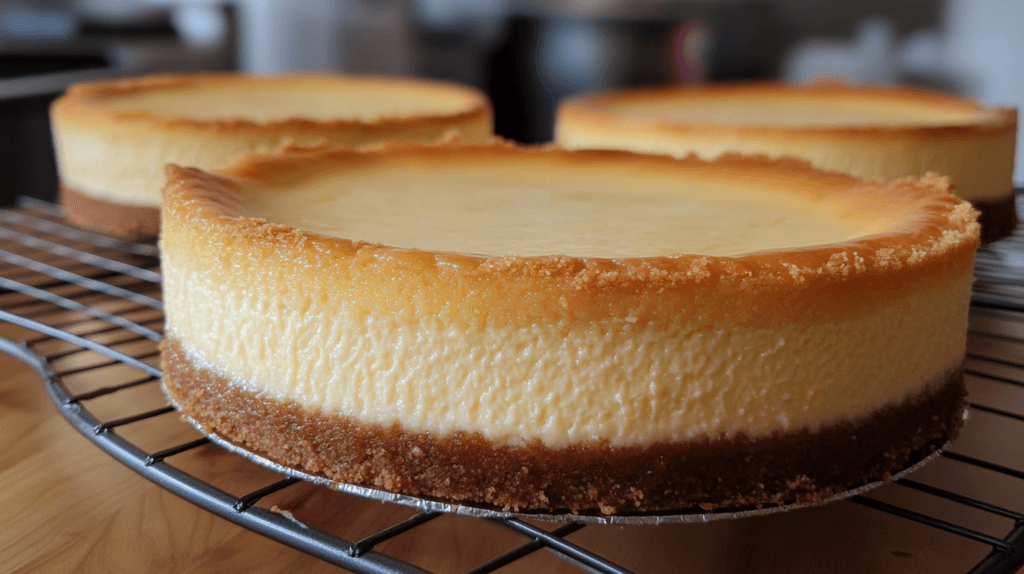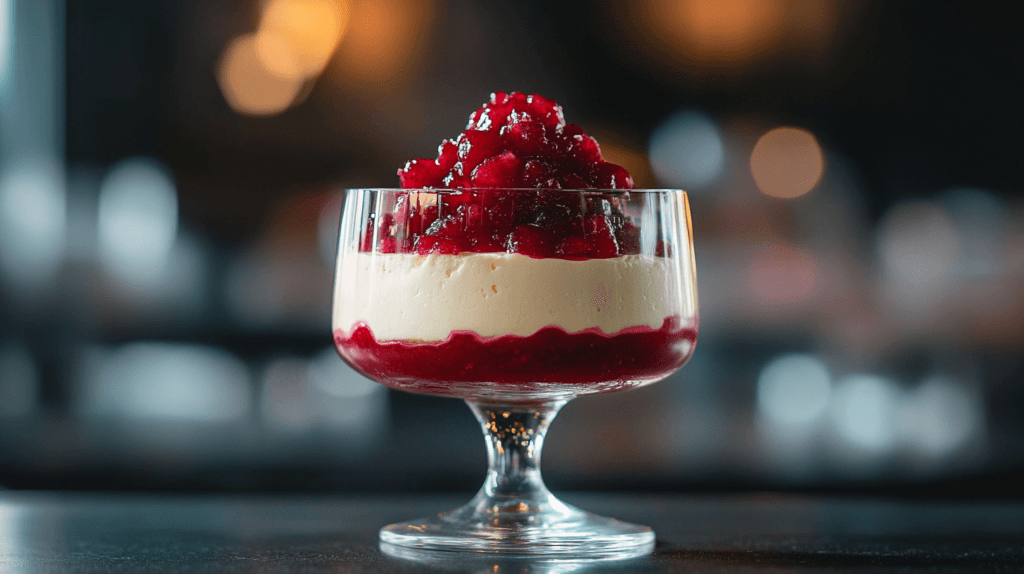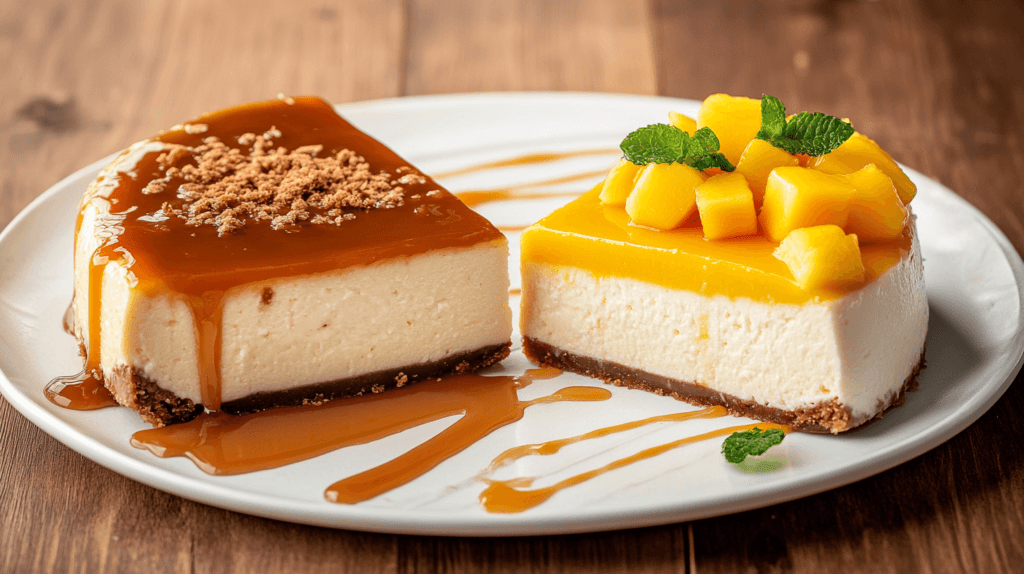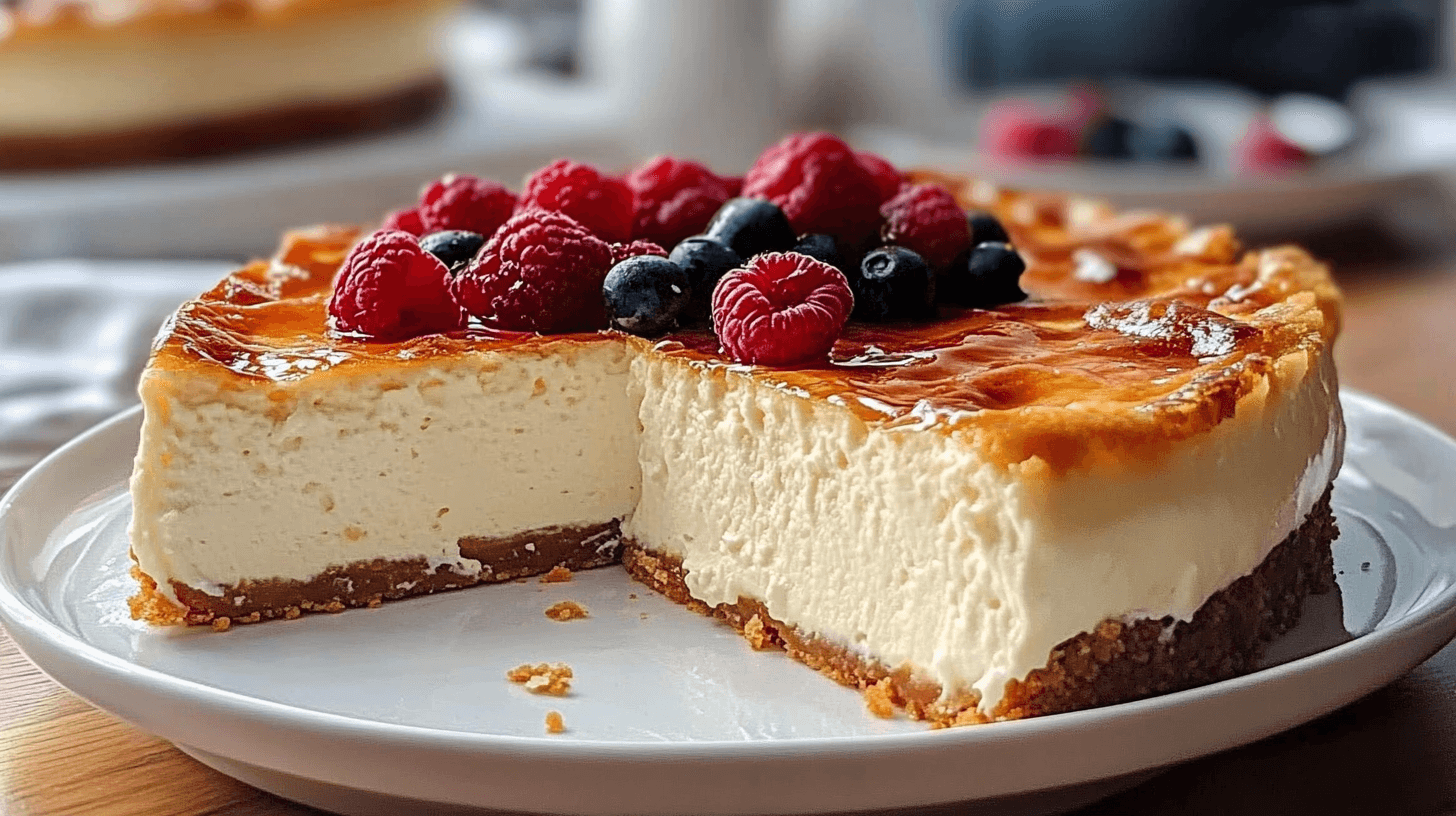Cheesecake is a beloved dessert that has captivated palates worldwide. With its creamy texture and rich flavors, it’s no wonder this dish holds a special place in culinary traditions. However, when it comes to preparing cheesecake, a key debate arises: Is it better to bake or not bake a cheesecake? Each method has its own unique charm, techniques, and outcomes, sparking a discussion among bakers and dessert lovers alike.
This article explores the pros and cons of baked and no-bake cheesecakes, examining their differences in taste, texture, preparation, and more. By the end, you’ll have a clear understanding of which type best suits your preferences and occasions.
Table of Contents
What is Cheesecake?
Cheesecake is a versatile dessert that has evolved over centuries, blending creamy layers with various crusts, toppings, and flavors. It can range from simple recipes to intricate culinary creations, making it a favorite for different occasions.
Historical Origins of Cheesecake
Cheesecake’s history dates back thousands of years. The first recorded mention traces to ancient Greece, where it was served to athletes during the first Olympic Games in 776 BCE. Roman armies later adopted the recipe, spreading it across Europe. Over time, regional variations emerged, incorporating local ingredients and baking techniques. The cheesecake we know today gained popularity in America with the introduction of cream cheese in the late 19th century.
Key Ingredients in Cheesecake
At its core, cheesecake is a combination of the following components:
- Cheese Base: Usually cream cheese, ricotta, or mascarpone, providing the signature creamy texture.
- Sweetener: Sugar or alternative sweeteners balance the tangy flavor of the cheese.
- Crust: Typically made from graham crackers, cookies, or shortbread.
- Flavor Additions: Eggs, vanilla extract, fruit purees, or chocolate add variety to the taste.
- Toppings: Fresh fruits, sauces, or whipped cream enhance the dessert’s visual and flavor appeal.
Defining Baked and No-Bake Cheesecake
The distinction between baked and no-bake cheesecake lies in their preparation and final texture:
- Baked Cheesecake: Cooked in an oven, this version often includes eggs for a firm and structured result.
- No-Bake Cheesecake: Set in the refrigerator using ingredients like gelatin or whipped cream, no-bake cheesecakes are soft and mousse-like.
Each type offers distinct advantages and caters to different preferences, as the following sections will explore.
What is a Baked Cheesecake?
A baked cheesecake is a traditional dessert known for its rich, creamy texture and slightly dense consistency. The process of baking transforms the ingredients, creating a firm and velvety dessert that is both indulgent and satisfying.

Preparation Process for Baked Cheesecake
Baking a cheesecake requires a series of precise steps to achieve the perfect texture and flavor:
- Preparing the Crust: The base, often made with crushed graham crackers or cookies mixed with melted butter, is pressed into a springform pan.
- Mixing the Filling: The cream cheese, sugar, eggs, and flavorings (like vanilla or lemon zest) are blended to create a smooth batter.
- Baking the Cheesecake: The pan is often placed in a water bath (bain-marie) to ensure even cooking and to prevent cracks. The cheesecake is baked at a moderate temperature until set but still slightly jiggly in the center.
- Cooling and Chilling: After baking, the cheesecake must cool gradually to room temperature and then chill in the refrigerator for several hours or overnight.
Popular Types of Baked Cheesecakes
- New York Cheesecake: Renowned for its dense, creamy texture and tangy flavor, it often features a simple graham cracker crust.
- Basque Burnt Cheesecake: This rustic version has a caramelized top and a custard-like center.
- Ricotta Cheesecake: A lighter variant using ricotta cheese, popular in Italian cuisine.
Common Challenges When Baking
Baking cheesecake can be tricky, especially for beginners. Some common issues include:
- Cracks in the Surface: Often caused by overbaking or rapid cooling.
- Water Seepage: If the springform pan isn’t sealed tightly, water from the bain-marie can leak into the cheesecake.
- Overmixing: Incorporating too much air into the batter can result in a dense and uneven texture.
Despite these challenges, the effort of making a baked cheesecake is often rewarded with a dessert that is luxurious, flavorful, and perfect for special occasions.
What is a No-Bake Cheesecake?
No-bake cheesecake is an easier alternative that skips the oven entirely. Instead, it relies on chilling to set the filling, making it a go-to choice for quick and fuss-free preparation.
Preparation Process for No-Bake Cheesecake
Here’s how a no-bake cheesecake typically comes together:
- Making the Crust: Similar to baked cheesecake, the crust is made from crushed cookies or biscuits mixed with butter and pressed into a pan.
- Creating the Filling: Ingredients like cream cheese, whipped cream, sugar, and flavorings are mixed until light and creamy. Gelatin or other stabilizers are often added to ensure the filling sets properly.
- Chilling to Set: The assembled cheesecake is placed in the refrigerator to chill for several hours or until firm.

Varieties of No-Bake Cheesecakes
- Classic No-Bake Cheesecake: A simple yet delicious version with a smooth cream cheese filling.
- Fruit-Topped Cheesecake: Features a layer of fresh fruit or fruit compote for added flavor.
- Chocolate No-Bake Cheesecake: Infused with melted chocolate for a rich, decadent treat.
Benefits of No-Bake Cheesecakes
- Ease of Preparation: No need to worry about baking times or oven temperatures.
- Time Efficiency: Perfect for when you’re short on time and need a quick dessert.
- Light and Airy Texture: The chilled preparation creates a mousse-like consistency.
No-bake cheesecakes are an excellent choice for warm-weather gatherings or when you want a hassle-free dessert.
Baked Cheesecake: Pros and Cons
Baked cheesecake is loved for its robust flavor and dense texture, but it comes with its own set of advantages and drawbacks. Let’s take a closer look at both sides.
Advantages of Baking Cheesecake
- Rich Flavor: Baking enhances the natural creaminess of the cheese and brings out a deep, nuanced flavor.
- Firm Texture: The addition of eggs and the baking process results in a dense, custard-like consistency that holds its shape well.
- Versatile Serving: Baked cheesecakes pair beautifully with toppings like caramel, fruit compote, or chocolate ganache.
- Classic Appeal: Iconic recipes like New York cheesecake are timeless and cherished worldwide.
Disadvantages and Limitations
- Time-Intensive: Baking, cooling, and chilling require several hours, making it less suitable for last-minute preparations.
- Requires Precision: Temperature control, mixing techniques, and timing are crucial to avoid common pitfalls like cracks or overbaking.
- Special Equipment: A springform pan and, often, a water bath setup are necessary.
- Heavy Calorie Count: The dense texture usually means a higher calorie content compared to no-bake alternatives.
No-Bake Cheesecake: Pros and Cons
No-bake cheesecakes offer convenience and versatility, but they’re not without their limitations. Let’s examine their benefits and challenges.
Advantages of No-Bake Cheesecake
- Quick and Easy: With no oven involved, preparation is straightforward and beginner-friendly.
- Light and Airy Texture: The mousse-like consistency is ideal for those who prefer a less dense dessert.
- Great for Warm Climates: No need to heat up the kitchen with an oven during hot weather.
- Customizable Flavors: From tropical fruits to chocolate, no-bake cheesecakes adapt well to creative flavor experiments.
Disadvantages and Challenges
- Weaker Structure: No-bake cheesecakes are softer and may not hold their shape as well as baked versions.
- Dependency on Stabilizers: Ingredients like gelatin or whipped cream are often needed to maintain consistency, which might alter the flavor.
- Shorter Shelf Life: The softer texture makes no-bake cheesecakes more perishable.
- Limited Flavor Depth: The absence of baking means the flavors might lack the depth achieved through caramelization and heat.
Taste and Texture Differences
One of the most significant factors in deciding between baked and no-bake cheesecake is the difference in taste and texture. These elements greatly influence the overall dessert experience and cater to diverse preferences.
Flavor Profiles of Baked Cheesecake
Baked cheesecakes are known for their intense, rich flavor. The cooking process allows the ingredients, particularly the cream cheese and eggs, to meld together, creating a bold and creamy taste. The caramelization that occurs during baking adds depth and complexity to the flavor. Variations like New York cheesecake also introduce a tanginess from sour cream or lemon zest, elevating the taste further.
Flavor Profiles of No-Bake Cheesecake
No-bake cheesecakes offer a fresher, lighter flavor. Since no heat is applied, the natural taste of the cream cheese and other ingredients remains prominent. This method often incorporates vibrant, fruity flavors or subtle sweetness, making it ideal for those who prefer a more delicate dessert.
Comparing Texture Preferences
- Baked Cheesecake:
The texture of a baked cheesecake is dense, firm, and velvety. It holds its shape well and is often preferred for formal occasions or as a statement dessert. The eggs play a significant role in achieving this structure. - No-Bake Cheesecake:
In contrast, no-bake cheesecakes are soft and mousse-like, with a lighter mouthfeel. This texture appeals to those seeking a more casual or summery treat. The whipped cream or gelatin used in no-bake recipes contributes to the airy consistency.
Cooking and Preparation Times
Another deciding factor is the time required to prepare baked and no-bake cheesecakes.
Time Required for Baked Cheesecake
Baking a cheesecake is a time-intensive process:
- Preparation: Mixing the crust and filling typically takes 20–30 minutes.
- Baking: Depending on the recipe, the cheesecake may need 45–90 minutes in the oven.
- Cooling and Chilling: After baking, the cheesecake must cool gradually and chill in the refrigerator for at least 4–6 hours, or overnight, for the best results.
Time Efficiency with No-Bake Cheesecake
No-bake cheesecakes are much quicker to prepare:
- Preparation: Assembling the crust and filling usually takes 15–20 minutes.
- Chilling: The cheesecake needs to set in the refrigerator for 4–6 hours. While this chilling time is similar to baked cheesecakes, the absence of baking reduces overall preparation time.
For those short on time or without access to an oven, no-bake cheesecakes offer a more convenient option without compromising on flavor.
Nutritional Aspects
When choosing between baked and no-bake cheesecake, understanding the nutritional differences can help make a more informed decision. Both options have their unique profiles based on ingredients and preparation methods.
Calorie Count in Baked vs. No-Bake Cheesecake
- Baked Cheesecake:
The inclusion of eggs and a higher fat content in baked cheesecake often results in a calorie-dense dessert. A single slice can range from 300–500 calories, depending on the recipe and toppings used. - No-Bake Cheesecake:
Generally lighter, no-bake cheesecakes can have fewer calories per slice, often ranging from 200–400 calories. The absence of eggs and lower fat content in some recipes contribute to this difference.
Healthier Options and Substitutes for Both Types
- Baked Cheesecake:
- Use reduced-fat cream cheese or Greek yogurt to cut down on calories and fat.
- Opt for natural sweeteners like honey or stevia instead of sugar.
- Experiment with almond or oat crusts for added fiber.
- No-Bake Cheesecake:
- Incorporate fresh fruit purees for natural sweetness and added vitamins.
- Use low-fat cream cheese or whipped yogurt for a lighter filling.
- Choose whole-grain biscuits or nuts for the crust to increase nutritional value.
Both baked and no-bake cheesecakes can be modified to cater to dietary needs, such as low-carb, vegan, or gluten-free.
Equipment and Skill Levels
The preparation process for both baked and no-bake cheesecakes requires specific tools and skills. Understanding these requirements can help determine which method is more suitable for you.
Tools Needed for Baked Cheesecake
- Springform Pan: Essential for easy removal and presentation.
- Electric Mixer: Ensures a smooth, lump-free filling.
- Oven: A must-have for the baking process.
- Water Bath Setup: Often needed to prevent cracks and maintain even cooking.
Tools Needed for No-Bake Cheesecake
- Mixing Bowls: For preparing the crust and filling.
- Hand or Stand Mixer: Helps achieve a creamy, fluffy consistency.
- Refrigerator: The primary tool for setting the cheesecake.
Skill Requirements for Each Type
- Baked Cheesecake:
Requires a higher level of skill and attention to detail. Precise timing, mixing, and temperature control are crucial to avoid common pitfalls like cracks or overbaking. - No-Bake Cheesecake:
Easier to master for beginners. The absence of baking eliminates the need for temperature control, making it more forgiving.
Whether you’re an experienced baker or a novice, both methods can be enjoyable with the right tools and preparation.
Occasions and Serving Ideas
Cheesecake’s versatility makes it suitable for a variety of occasions, and choosing between baked and no-bake versions often depends on the setting, season, and preferences of the guests.
When to Choose Baked Cheesecake
Baked cheesecakes shine in formal and special occasions, thanks to their rich flavor and firm texture. Ideal situations include:
- Holidays and Celebrations: Perfect for Christmas, Thanksgiving, or milestone events like anniversaries.
- Dinner Parties: Its luxurious appeal pairs well with elegant main courses.
- Cool Weather Gatherings: The warm, hearty texture complements cold seasons.
When to Choose No-Bake Cheesecake
No-bake cheesecakes are light, refreshing, and well-suited for casual or warm-weather occasions. Ideal settings include:
- Summer Parties: A chilled dessert provides a cool, satisfying finish.
- Picnics and Outdoor Events: Easy to prepare and serve in a variety of settings.
- Quick Get-Togethers: Time-efficient for spontaneous gatherings.
Ideal Serving Styles for Both
- Baked Cheesecake: Serve with a drizzle of caramel or chocolate sauce, a dollop of whipped cream, or a side of fresh berries.
- No-Bake Cheesecake: Top with fruit compote, crushed cookies, or a sprinkle of grated chocolate for an appealing presentation.
Both types can be presented as single servings in jars, classic slices, or layered parfaits, depending on the occasion.
Popular Recipes for Both Types

Both baked and no-bake cheesecakes can be adapted to various flavor profiles and creative twists. Here are some popular recipes to inspire your next dessert adventure.
A Classic Baked Cheesecake Recipe
Ingredients: Cream cheese, sugar, eggs, vanilla extract, graham cracker crust.
Instructions:
- Prepare the crust and press it into a springform pan.
- Beat cream cheese, sugar, and eggs until smooth, then pour over the crust.
- Bake in a water bath at 325°F (160°C) for 60–75 minutes.
- Cool gradually and refrigerate before serving.
A Classic No-Bake Cheesecake Recipe
Ingredients: Cream cheese, powdered sugar, whipped cream, gelatin, cookie crust.
Instructions:
- Mix crushed cookies with melted butter for the crust and press into a pan.
- Beat cream cheese and sugar, fold in whipped cream, and dissolve gelatin for stabilization.
- Pour over the crust and refrigerate until set.
Innovative Twists to Try
- Baked Cheesecake with a Brownie Crust: Combine the richness of cheesecake and brownies.
- No-Bake Mango Cheesecake: Add tropical mango puree for a refreshing flavor.
- Marbled Cheesecake: Create a swirl of chocolate and vanilla in either baked or no-bake styles.
Cost Comparison
Budget can also play a role in determining whether to bake or not bake a cheesecake.
Ingredient Costs for Baked Cheesecake
Baked cheesecakes typically require more ingredients, such as eggs and high-quality cream cheese. Additionally, baking consumes energy, adding to the overall cost.
Ingredient Costs for No-Bake Cheesecake
No-bake cheesecakes can be more budget-friendly due to fewer ingredients and the absence of baking. However, some recipes may require stabilizers like gelatin, which could slightly increase costs.
Which is More Budget-Friendly?
- Baked Cheesecake: Best for when you’re willing to invest in a premium dessert experience.
- No-Bake Cheesecake: Perfect for cost-effective and efficient preparation.
related recipes:
FAQs
What Are the Key Differences Between Baked and No-Bake Cheesecake?
The primary differences lie in texture, preparation, and taste:
- Baked Cheesecake: Dense, firm, and rich; requires baking and cooling.
- No-Bake Cheesecake: Soft, light, and mousse-like; sets in the refrigerator.
Can You Combine Baking and No-Baking Methods?
Yes! Hybrid cheesecakes exist where elements like the crust are baked for a crisp texture, but the filling is no-bake. This method offers the best of both worlds.
Which Type of Cheesecake Lasts Longer?
Baked cheesecake generally lasts longer due to its firmer texture and less reliance on perishable stabilizers. Proper refrigeration is crucial for both types.
Are There Vegan Options for Both Types?
Absolutely. Vegan versions can use cashew cream, tofu, or plant-based cream cheese. No-bake options are often easier to adapt to vegan diets using agar agar instead of gelatin.
Which Cheesecake Is Easier to Make?
No-bake cheesecake is more beginner-friendly due to its simpler process and fewer precision requirements.
How Can I Prevent Cracks in My Baked Cheesecake?
Avoid overmixing the batter, use a water bath, and allow the cheesecake to cool gradually to prevent cracking.
Conclusion
When deciding whether to bake or not bake a cheesecake, the answer depends on your personal preferences, occasion, and available time.
- Baked Cheesecake: Best for formal events, when you have time for careful preparation and crave a dense, luxurious dessert.
- No-Bake Cheesecake: Perfect for casual settings, quick preparation, or when you desire a light, refreshing treat.
By understanding the nuances of each method, you can select the perfect cheesecake style to satisfy your cravings and impress your guests. Whether baked or no-bake, this timeless dessert remains a favorite for all!

Baked vs. No‑Bake Cheesecake – Choose Your Favorite!
Equipment
- For Both Methods:
- Mixing bowls
- Measuring cups/spoons
- Rubber Spatula
- 8‑ or 9‑inch springform pan (for baked version) or pie dish (for no‑bake version)
- Food processor (optional, for crushing crackers)
- Refrigerator
- Additional for Baked Cheesecake:
- Oven
- Roasting pan or deep baking dish (for the water bath)
- Aluminum foil
- Additional for No‑Bake Cheesecake:
- Electric mixer (hand or stand) for whipping cream
Ingredients
- Crust Common to Both Methods
- 2 cups graham cracker crumbs or gluten‑free alternative
- 1/2 cup 115 g unsalted butter, melted
- 1/4 cup 50 g granulated sugar
- Baked Cheesecake Filling
- 4 packages 8 oz each, about 900 g total cream cheese, softened to room temperature
- 1 cup 200 g granulated sugar
- 4 large eggs at room temperature
- 1 cup 240 ml sour cream
- 1 teaspoon vanilla extract
- 2 tablespoons all‑purpose flour
- No‑Bake Cheesecake Filling
- 3 packages 8 oz each, about 680 g total cream cheese, softened to room temperature
- 1 cup 120 g powdered sugar, sifted
- 1 cup 240 ml heavy cream, chilled (plus extra for whipping if desired)
- 1 teaspoon vanilla extract
Instructions
- Baked Cheesecake Method
- Prepare the Crust:
- Preheat your oven to 325°F (163°C).
- In a bowl, combine graham cracker crumbs, melted butter, and granulated sugar.
- Press the mixture firmly into the bottom (and slightly up the sides) of a greased 9‑inch springform pan.
- Place the pan in the refrigerator to firm up the crust while you prepare the filling.
- Make the Filling:
- In a large mixing bowl, beat the softened cream cheese until smooth and free of lumps.
- Gradually add the granulated sugar, mixing until fully incorporated.
- Add the eggs one at a time, beating well after each addition.
- Stir in the sour cream, vanilla extract, and flour until the mixture is silky and uniform.
- Assemble & Bake:
- Pour the filling over the chilled crust in the springform pan.
- To help prevent cracks and ensure even baking, set the springform pan in a larger roasting pan. Fill the outer pan with hot water until it reaches about halfway up the side of the springform pan (this is your water bath).
- Cover the top loosely with aluminum foil.
- Bake in the preheated oven for about 55–60 minutes, or until the center is just set and the edges are lightly golden.
- Cool & Chill:
- Turn off the oven and allow the cheesecake to sit in the oven with the door slightly open for 30 minutes.
- Remove from the water bath and let cool completely at room temperature.
- Refrigerate for at least 4 hours (preferably overnight) before slicing and serving.
- No‑Bake Cheesecake Method
- Prepare the Crust:
- In a bowl, combine graham cracker crumbs, melted butter, and granulated sugar.
- Press the mixture firmly into the bottom of a 9‑inch pie dish (or springform pan, if preferred).
- Chill in the refrigerator while you prepare the filling.
- Make the Filling:
- In a large bowl, beat the softened cream cheese until smooth.
- Gradually add the powdered sugar, beating until light and fluffy.
- In a separate bowl, whip the chilled heavy cream until stiff peaks form.
- Gently fold the whipped cream into the cream cheese mixture along with the vanilla extract, being careful not to deflate the mixture.
- Assemble & Set:
- Pour the filling over the prepared crust, smoothing the top with a spatula.
- Cover the cheesecake with plastic wrap and refrigerate for at least 6 hours or overnight until completely set.
- Before serving, you may top with fresh fruit, chocolate shavings, or a fruit compote as desired.
- Details
- Prep Time:
- Baked: ~20 minutes (excluding cooling/chilling)
- No‑Bake: ~15 minutes
- Cook/Set Time:
- Baked: ~60 minutes baking, plus cooling/chilling (total approx. 4–6 hours)
- No‑Bake: No baking; set in refrigerator for at least 6 hours or overnight
- Total Time:
- Baked: Approximately 5–6 hours (including baking, cooling, and chilling)
- No‑Bake: 6+ hours chilling
- Yield: Approximately 12 slices
- Category: Dessert
- Method: Baked / No‑Bake
- Cuisine: American (with modern twists)
- Diet:
- Vegetarian
- (For a gluten‑free version, substitute gluten‑free crackers for graham crackers)
- Keywords
- cheesecake, baked cheesecake, no‑bake cheesecake, dessert, creamy cheesecake, easy dessert, water bath, no‑oven recipe, classic cheesecake, summer dessert
- Nutrition (Approximate values per serving for the baked version; the no‑bake version may be slightly lighter due to differences in sugar and cream usage)
- Serving Size: 1 slice (approx. 100 g)
- Calories: ~400 kcal
- Sugar: ~20 g
- Sodium: ~300 mg
- Fat: ~30 g
- Saturated Fat: ~15 g
- Unsaturated Fat: ~10 g
- Trans Fat: 0 g
- Carbohydrates: ~30 g
- Fiber: ~2 g
- Protein: ~8 g
- Cholesterol: ~110 mg
- Note: Nutritional values can vary based on specific brands and ingredient variations.
Notes
Allowing the cheesecake to cool gradually (by letting it sit in the turned‑off oven) reduces the risk of a sudden temperature change that might cause cracks.
For an extra creamy texture, consider using full‑fat cream cheese and sour cream.
No‑Bake Cheesecake: This method is ideal when you want a quick assembly without heating up your kitchen.
Ensure the heavy cream is very cold before whipping for maximum volume and a light, airy texture.
Because it sets in the refrigerator, patience is key—the longer it chills, the firmer the cheesecake will become.
General Tips: Taste as you go: adjust sweetness to your preference.
For an added flavor dimension, consider a swirl of fruit puree or a dusting of cocoa on the top before serving.
Both methods benefit from a few hours (or overnight) of chilling, which helps develop the flavor and ensures perfect slicing.
